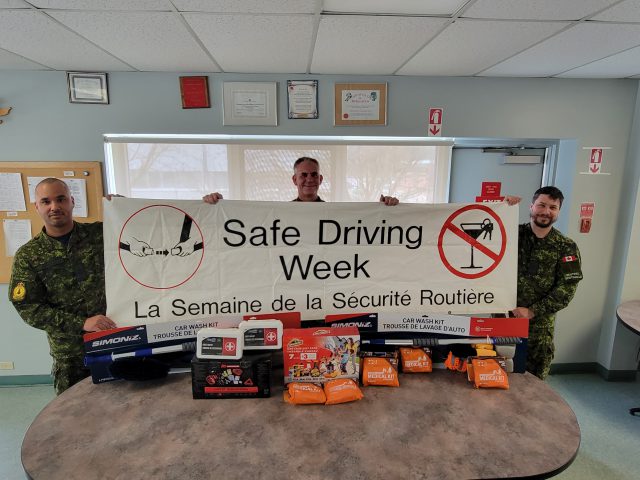
In an effort to promote safe driving, the Canadian Forces sets aside one week annually to promote safe driving practices, happening this year from 16-20 May. Road and Vehicle Safety Section (R&VSS) will be out and about throughout the week monitoring the safe driving practices of motorists at CFB Borden.
Drivers will be selected at random, based on their safe driving techniques and use of defensive driving procedures such as backing into parking spaces, wearing of seatbelts, full stops at stop signs, proper use of lights are some examples. If you are approached by R&VSS patrol during the week of 16-20 May, it is because you have been recognized as a safe driver and we would like to thank you and award you with a small token of our appreciation.
New technologies and the impact on road safety is this year’s theme for the National Road Safety Week.
Modern Technology in the Automotive Industry
Automatic High Beam Control
Most modern cars developed by leading companies such as Volkswagen, Toyota, and Hyundai have a framework that automatically lights up when it starts getting dark and dims high-beam headlights when they sense an oncoming vehicle.
Backup Cameras
The majority of vehicles today have backup cameras that make it easier for you to navigate while reversing or parking the car.
Self-driving vehicles
You should not be astonished to see a modern automotive that drives itself while the driver is seated at the back. How do they work? Self-driving vehicles make use of cameras, laser scanners, sensors, and brake activators to drive themselves.
GPS Car Track
A GPS vehicle tracking enables you to get regular updates on the position of your car. It can be extremely important for parents who want to enhance the safety of their teenagers. To watch it live, all you need is a reliable internet connection. The best thing about a GPS tracking device is it can be used by different vehicles.
Cruise control
At times, driving can be a boring and an unpleasant activity, especially when done for long periods with no breaks. With versatile cruise control, your worries will be eliminated.
Automatic lift-gates
Most modern vehicles don’t require a lot of energy on your part when it comes to the lift gate. All you have to do is walk towards the rear of your vehicle with your keys in your hands.
Biometric seat
This technological innovation allows drivers to effectively manage their disturbances while driving thus enhancing the modern automotive performance.
As vehicles become more sophisticated, lots of technological innovations will be needed to make it easier for drivers to drive their vehicles. Companies that will make use of emerging technology trends in automotive industry will be among the top in the future. The technological trends here are some of the common features to expect in any modern car.
Did you know, in Canada*:
- In 2018, distracted driving contributed to an estimated 20% of fatal collisions and 21% of serious injury collisions.
- Cell phone use while driving in the previous seven days was reported by 37%, but this was even higher for those aged 16-34 (55%).
- Distracted driving fatalities have surpassed those caused by impaired driving in some parts of Canada.
The likelihood to be in a crash or near a crash event increases this much with the following distractions:
- Texting on a smartphone: 23 times more likely
- Talking on a cellphone or smartphone: four to five times more likely
- Reading: three times more likely
- Applying makeup: three times more likely
- Reaching for a moving object: nine times more likely
- Dialing on a hand-held device: three times more likely
- Talking or listening on a hand-held device: 1.3 times more likely
When you drive distracted
- You slow your reaction time by 35%.
- You increase your crash risk by 500%.
- You fail to ‘see’ 50% of what’s in your environment.
“SAFE DRIVERS ARRIVE ALIVE.”
*Facts listed are reflective of latest 2018 data available.
Submitted by: MCpl Browne W, Road and Vehicle Safety Section, CFB Borden











